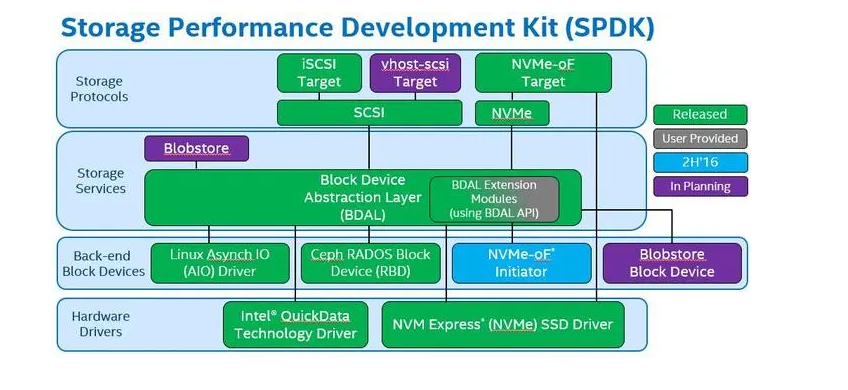好的,以下是使用DPDK发送巨型帧的示例代码:
#include <stdio.h>
#include <stdlib.h>
#include <string.h>
#include <rte_eal.h>
#include <rte_mbuf.h>
#include <rte_ethdev.h>
#include <rte_cycles.h>
#define RX_RING_SIZE 1024
#define TX_RING_SIZE 1024
#define NUM_MBUFS 8191
#define MBUF_CACHE_SIZE 250
#define BURST_SIZE 32
static const struct rte_eth_conf port_conf_default = {
.rxmode = { .max_rx_pkt_len = ETHER_MAX_LEN }
};
int main(int argc, char *argv[])
{
int ret;
uint16_t nb_ports;
uint16_t portid;
struct rte_mempool *mbuf_pool;
struct rte_eth_dev_info dev_info;
struct rte_eth_txconf txconf;
/* 初始化 EAL */
ret = rte_eal_init(argc, argv);
if (ret < 0)
rte_exit(EXIT_FAILURE, "Error with EAL initialization\n");
argc -= ret;
argv += ret;
/* 获取网口数量 */
nb_ports = rte_eth_dev_count_avail();
/* 创建内存池 */
mbuf_pool = rte_pktmbuf_pool_create("MBUF_POOL", NUM_MBUFS,
MBUF_CACHE_SIZE, 0, RTE_MBUF_DEFAULT_BUF_SIZE, rte_socket_id());
/* 配置端口并启动 */
for (portid = 0; portid < nb_ports; portid++) {
if (!rte_eth_dev_is_valid_port(portid))
continue;
/* 获取网卡信息 */
memset(&dev_info, 0, sizeof(dev_info));
rte_eth_dev_info_get(portid, &dev_info);
/* 配置网卡 */
ret = rte_eth_dev_configure(portid, 1, 1, &port_conf_default);
if (ret < 0)
rte_exit(EXIT_FAILURE, "Cannot configure device: err=%d, port=%u\n",
ret, portid);
/* 配置 TX 函数 */
memset(&txconf, 0, sizeof(txconf));
txconf.txq_flags = ETH_TXQ_FLAGS_NOOFFLOADS;
/* 启动端口 */
ret = rte_eth_tx_queue_setup(portid, 0, TX_RING_SIZE,
rte_eth_dev_socket_id(portid), &txconf);
if (ret < 0)
rte_exit(EXIT_FAILURE, "Cannot setup TX queue: err=%d,"
" port=%u\n", ret, portid);
ret = rte_eth_rx_queue_setup(portid, 0, RX_RING_SIZE,
rte_eth_dev_socket_id(portid), NULL, mbuf_pool);
if (ret < 0)
rte_exit(EXIT_FAILURE,
"rte_eth_rx_queue_setup:err=%d,port=%u\n",
ret,(unsigned) portid);
/* 启动设备 */
ret = rte_eth_dev_start(portid);
if (ret < 0)
rte_exit(EXIT_FAILURE,
"rte_eth_dev_start:err=%d,port=%u\n",
ret,(unsigned)portid);
printf("Ethernet device %u successfully configured.\n", portid);
}
/* 创建一个 MBUF 包 */
struct rte_mbuf *pkt[BURST_SIZE];
for (int i = 0; i < BURST_SIZE; i++) {
pkt[i] = rte_pktmbuf_alloc(mbuf_pool); // 从内存池中获取一个 MBUF 包
if (pkt[i] == NULL)
rte_exit(EXIT_FAILURE, "Cannot allocate mbuf\n");
/* 设置包头 */
pkt[i]->data_len = ETHER_MAX_LEN; // 数据长度为最大以太网帧长度
pkt[i]->pkt_len = ETHER_MAX_LEN;
}
/* 发送 MBUF 包 */
uint64_t tx_time = 0;
int nb_tx = rte_eth_tx_burst(0, 0, pkt, BURST_SIZE);
if (nb_tx < BURST_SIZE) {
for (int i = nb_tx; i < BURST_SIZE; i++)
rte_pktmbuf_free(pkt[i]); // 释放未发送的 MBUF 包
} else {
/* 等待一段时间,直到数据发送完毕 */
do {
nb_tx = rte_eth_tx_done_cleanup(0, BURST_SIZE);
tx_time += rte_get_timer_cycles();
rte_delay_us(5);
} while (nb_tx);
printf("TX time: %lu cycles\n", tx_time / BURST_SIZE);
}
return 0;
}
以上代码创建了一个内存池和一个网口,并使用DPDK发送了32个巨型帧。需要注意的是,这只是基本示例代码,实际应用中可能需要更加复杂的逻辑来处理巨型帧。





















